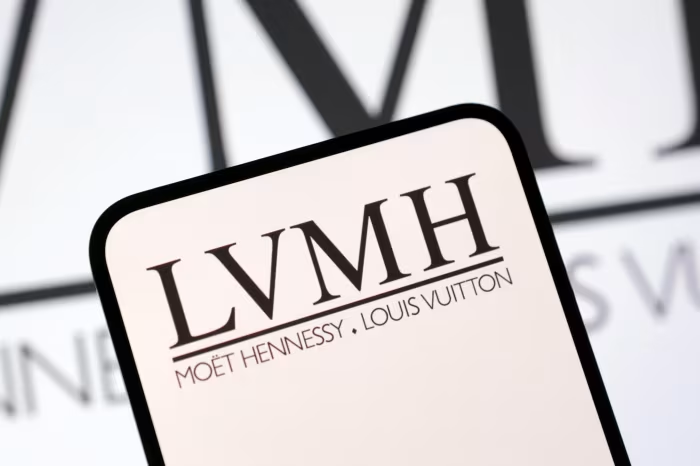
Hey there, future marketing whizzes! Today, we’re taking a closer look at LVMH Moët Hennessy Louis Vuitton – the powerhouse that has perfected the art of making everyday folks dream about handbags that cost more than a semester’s worth of tuition. If you’re on the hunt for some case study analysis help to unravel how they pulled off this incredible trick, you’ve come to the right spot!
LVMH is essentially the Thanos of luxury goods – they’ve collected approximately 75 prestigious brands across five sectors: Fashion & Leather Goods, Wines & Spirits, Perfumes & Cosmetics, Watches & Jewelry, and Selective Retailing. We’re talking Louis Vuitton, Dior, Moët & Chandon, Tiffany & Co. and Sephora, among others. Their business model? Take beautiful things, make them extremely expensive, and convince everyone they need them.
Here’s where it gets deliciously strategic. LVMH doesn’t just sell products; they sell aspirational impossibility. Their marketing approach combines several brilliant tactics:
Heritage Storytelling: Every brand in their lineup has a story that’s been around longer than your professor’s lecture notes. Take Louis Vuitton, for instance – they kicked off their journey making trunks back in 1854, and they’ll make sure you remember that!
Artificial Scarcity: We’ve all been there – limited editions, those pesky waiting lists and the frustrating moment when you hear “Sorry, we’re out of stock”, even though the shelves are brimming with merchandise. It’s Economics 101 meets psychological warfare.
Celebrity Endorsements That Break the Internet: When LVMH isn’t busy sparking desire, they’re teaming up with everyone from BTS to Zendaya, making sure Gen Z realizes that luxury isn’t just for those with trust funds anymore (though it definitely helps).
Experiential Retail: Their stores aren’t just shops; they’re like sacred spaces. Stepping into a Louis Vuitton boutique feels more like wandering into a museum, where you somehow feel both welcomed and a bit out of your element.
LVMH has skillfully embraced digital marketing while still maintaining its air of exclusivity. Their social media approach strikes a delicate balance between being accessible and aspirational – close enough to admire, yet just out of reach for most. They’ve turned unboxing videos into an art form and made the LV monogram more recognizable than most national flags.
Whether you’re crafting essays at Study Creek or diving deep into research at Dissertation Hive, LVMH offers a masterclass in brand management, market segmentation, and the psychology of luxury consumption. They’ve proven that in marketing, emotion trumps logic every single time.
The takeaway? LVMH doesn’t sell leather goods or champagne – they sell the dream of arriving. And judging by their $400+ billion market cap, that dream is highly profitable.
Now, if you’ll excuse me, I need to go contemplate my life choices while staring at handbags I’ll photograph but never purchase.

what is LVMH’s history? (briefly)
Title: LVMH and the Chinese Luxury Market – Brief Marketing Assignment
[Student]
[Course]
[Date]
LVMH, which stands for Moët Hennessy • Louis Vuitton, came into existence in 1987 when the iconic fashion house Louis Vuitton joined forces with the drinks powerhouse Moët Hennessy. Since that time, the Group has expanded significantly, primarily by bringing established luxury brands into its fold. Today, LVMH boasts around 75 Maisons spread across six different business sectors: Fashion & Leather Goods, Wines & Spirits, Perfumes & Cosmetics, Watches & Jewelry, Selective Retailing and Other activities.
In 2024, the Group reported an impressive revenue of about €84.7 billion, supported by a vast retail network of over 6,300 stores in nearly 80 countries. Some of LVMH’s most famous maisons include Louis Vuitton, Dior, Fendi, Givenchy, Moët & Chandon, Hennessy, Bulgari, and Sephora, among many others. This Group stands out as a highly diversified luxury conglomerate, offering everything from leather goods and ready-to-wear fashion to watches, jewelry, cosmetics, fragrances, wines, spirits and selective retail services. LVMH+2LVMH+2
LVMH has been commercially successful for decades: steady revenue growth to €84.7bn in 2024 and strong cash generation demonstrate long-term scale and profitability, although margins and some segments softened after the Covid boom. Its decentralised “Maisons” model gives brand desirability and resilience across economic cycles. Performance varies across different regions and brands: Fashion & Leather Goods stands out as the biggest profit generator, while the watches and jewelry sectors have struggled due to a dip in Chinese demand. The signs of success are clear: public financial reports, ongoing mergers and acquisitions that enhance prestige and broaden category coverage, and consistently strong operating cash flows. LVMH+1
China has been the single most important market for luxury: Chinese consumers have at times accounted for roughly a third of global luxury purchases and for around a third of LVMH’s global sales, underlining China’s outsized role. However, mainland China saw an 18–20% decline in personal luxury goods in 2024, a sharp reversion to 2020 levels driven by weak consumer confidence and more outbound shopping — Bain & Company estimates the market contracted in 2024 and expected flat sales in 2025.
Globally, the luxury market slowed around 2024–25 (industry studies from Bain and McKinsey show a near-flat to slightly negative growth environment after rapid post-Covid expansion). Compared with other regions, China remains the largest single national market in value terms, but its recent growth rate has been volatile and lower than the prior boom years. Reuters+2Bain & Company+2
• Political: domestic policy stability, anti-extravagance sentiment and regulation of resellers/taxation affect conspicuous consumption.
• Economic: property sector malaise, unemployment risks and slower GDP growth depress high-end discretionary spending.
• Social: shift to discreet luxury (“luxury shame”), aging affluent cohorts and younger shoppers’ different values.
• Technological: strong e-commerce, livestreaming, and platforms (Tmall/Douyin) shape distribution and pricing.
• Environmental: sustainability expectations push brands to demonstrate ESG credentials (supply chain transparency).
• Legal: cross-border price parity and import rules influence where Chinese shoppers buy. Bain & Company+1
Competition is intense: global groups (LVMH, Kering, Richemont, Hermès) plus rising local premium players compete across segments. Chinese nationals historically accounted for ~1/3 of LVMH’s sales, which signals LVMH’s major exposure to China, but precise market-share by segment varies and has recently been pressured by the market contraction. Reuters+1
LVMH stands tall as a powerhouse in the luxury sector, boasting a diverse portfolio and a strong presence in China. Given the recent ups and downs in the Chinese market, it’s crucial to adopt focused strategies. This means tapping into local consumer insights, being flexible with pricing and distribution channels – think e-commerce and private appointments – and weaving in some compelling ESG storytelling. Monitoring macro and social sentiment in China is essential for short-term planning.
Bain & Company — 2024 China Luxury Goods Market; LVMH investor pages; Reuters; McKinsey State of Luxury (2024–25).
Delivering a high-quality product at a reasonable price is not enough anymore.
That’s why we have developed 5 beneficial guarantees that will make your experience with our service enjoyable, easy, and safe.
You have to be 100% sure of the quality of your product to give a money-back guarantee. This describes us perfectly. Make sure that this guarantee is totally transparent.
Read moreEach paper is composed from scratch, according to your instructions. It is then checked by our plagiarism-detection software. There is no gap where plagiarism could squeeze in.
Read moreThanks to our free revisions, there is no way for you to be unsatisfied. We will work on your paper until you are completely happy with the result.
Read moreYour email is safe, as we store it according to international data protection rules. Your bank details are secure, as we use only reliable payment systems.
Read moreBy sending us your money, you buy the service we provide. Check out our terms and conditions if you prefer business talks to be laid out in official language.
Read more